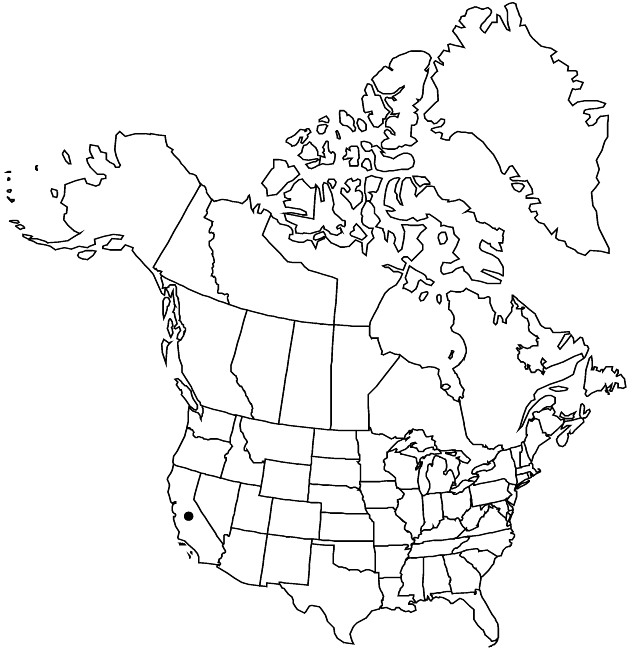Lasthenia coronaria
Univ. Calif. Publ. Bot. 40: 76. 1966.
Annuals, to 40 cm (herbage sweetly scented). Stems erect, branched distally, usually glandular-puberulent (often with longer nonglandular hairs as well). Leaves linear, 15–60 × 0.5–5 mm, (not fleshy) margins entire or 1–2-pinnately lobed, faces hairy. Involucres hemispheric to obconic, 4–7 mm. Phyllaries 6–14, lanceolate to ovate, hairy. Receptacles conic, smooth, muricate, or pitted, hairy. Ray-florets 6–15; (corollas yellow) laminae linear-oblong or oblong, 3–10 mm. Anther appendages elliptic, acute (style apices ± deltate with apical tufts of hairs and subapical fringes of shorter hairs). Cypselae black, linear to narrowly clavate, to 2.5 mm, hairy; pappi usually of 5–6+ lanceolate to ovate scales (1–5 uniaristate), sometimes of 4–5 subulate, aristate scales, or 0.2n = 8, 10.
Phenology: Flowering Mar–May.
Habitat: Sunny, open grassy areas
Elevation: 0–700 m
Distribution

Calif., Mexico (Baja California)
Discussion
Pappus, head size, and branching pattern vary in Lasthenia coronaria. Two types of pappi are often found within a head and sometimes in different individuals of a population. The most distinctive feature of this species is its glandular herbage, which produces a characteristic sweet scent not present in any other lasthenia.
Selected References
None.